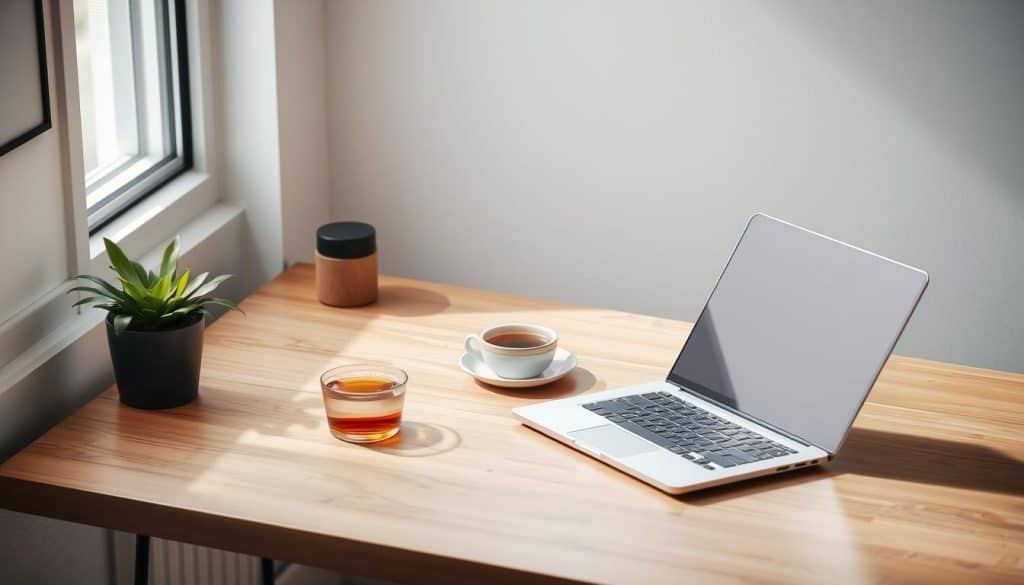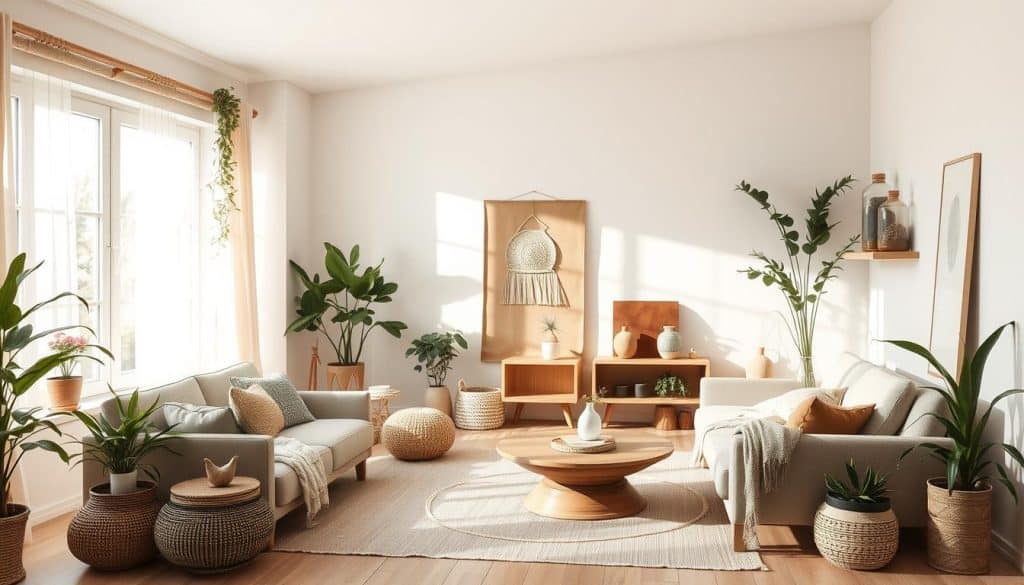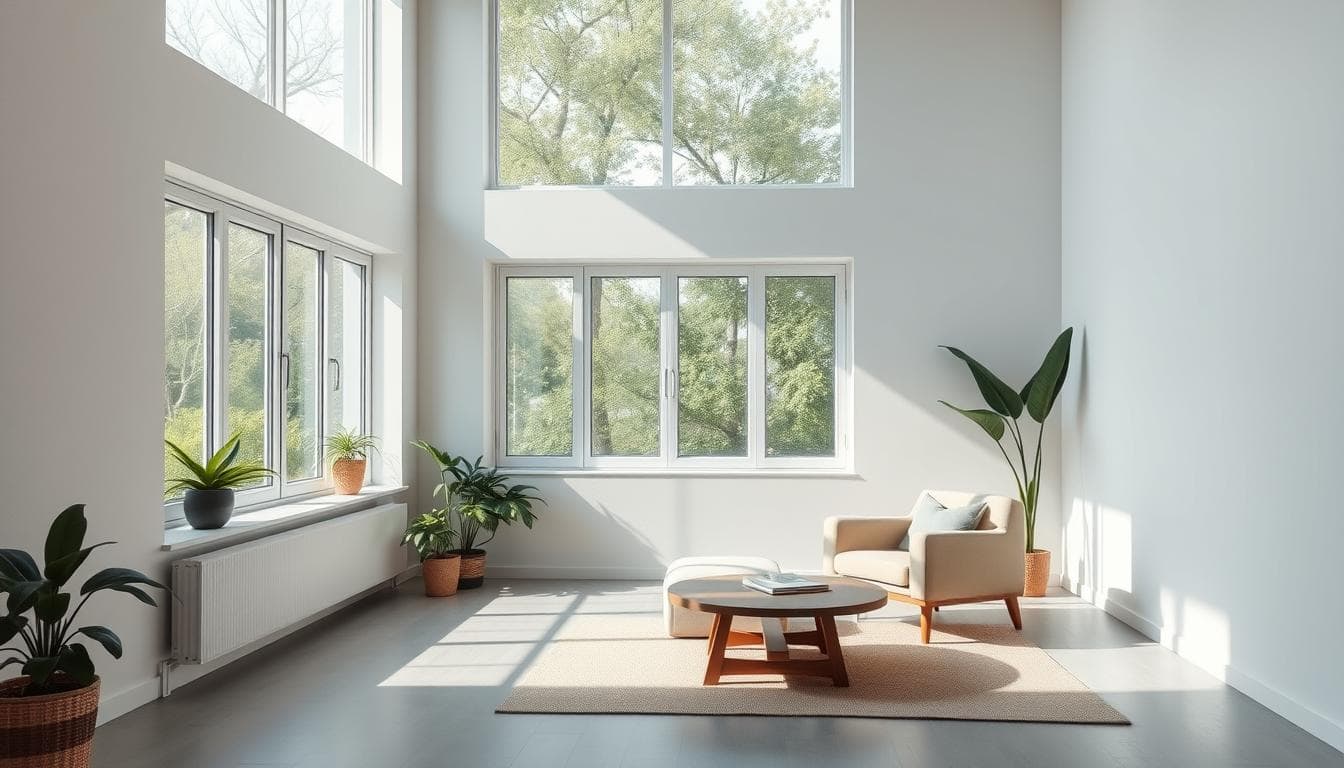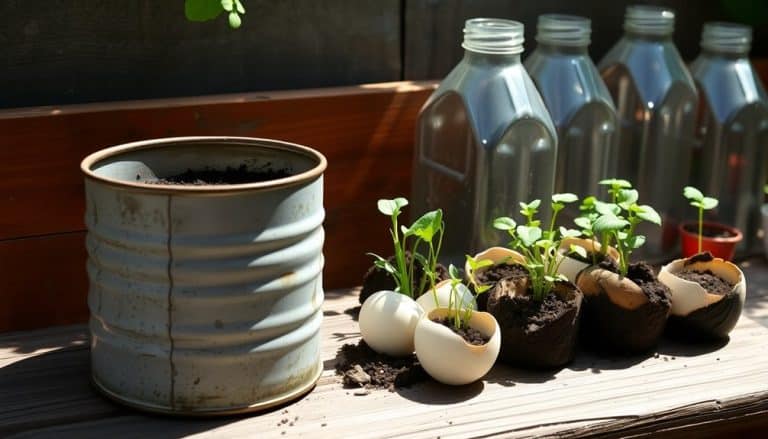This website contains affiliate links. Some products are gifted by the brand to test. As an Amazon Associate, I earn from qualifying purchases. The content on this website was created with the help of AI.
Minimalist living has gained popularity as people seek to simplify their lives. This lifestyle focuses on decluttering homes and minds. Let’s explore how minimalism can transform your daily existence.
Minimalism isn’t about owning nothing. It’s about keeping what truly matters. By reducing clutter, we make room for important things. This approach can lead to less stress and more time for priorities.
Leo Babauta, a well-known minimalist, shares his experience with this lifestyle. Visitors often describe his home as calm and clutter-free. His approach shows how minimalism creates peace without extreme measures.
Research supports the benefits of minimalist living. Studies reveal that clutter triggers stress hormones, affecting memory and nervous system function. Simplifying our surroundings can boost well-being and productivity.
Key Takeaways
- Minimalism focuses on keeping what’s valuable and removing distractions
- A clutter-free environment can reduce stress and improve focus
- Minimalist homes are often described as calming and easier to clean
- Adopting a minimalist lifestyle is a gradual process of intentional choices
- Simplifying your life can free up time, space, and energy for priorities
Understanding the Core Principles of Minimalism
Minimalism is more than just simple aesthetics. It’s a lifestyle focused on intentional living and a minimalist mindset. This approach to life is defined by core principles.
Defining True Minimalism Beyond Aesthetics
Minimalism isn’t just about owning less stuff. It’s about aligning your life with your personal values. The average American home has 300,000 items.
Minimalism challenges us to question if we really need all these things. It encourages us to make choices that truly matter to us.
The Philosophy of Intentional Living
Intentional living is key to minimalism. It means focusing on what’s important and cutting out distractions. This can lead to big changes in your life.
You might move to a new city or start your own business. These choices come from living with purpose.
Breaking Common Misconceptions
Many think minimalism means living with very little. Others see it as a quick fix. In truth, it’s an ongoing practice that grows over time.
There are no strict rules in minimalism. It’s about finding what works for you and your life.
| Common Belief | Minimalist Reality |
|---|---|
| Owning as little as possible | Owning what adds value to life |
| Instant lifestyle change | Gradual, continual practice |
| Strict rules to follow | Flexible, personalized approach |
Embracing these ideas can bring more peace and focus to your life. Minimalism isn’t about lacking things. It’s about having more of what truly counts.
The Benefits of Embracing a Minimalist Lifestyle
Minimalism paves the way to a more fulfilling life. Our family has experienced profound changes over 15 years. We’ve shifted careers, downsized our home, and found new passions.
A key advantage is stress reduction. Decluttering our space has brought mental clarity. This allows us to focus on what truly matters.
Financial freedom is another benefit. Minimalism promotes mindful spending and breaks the consumerism cycle. We’ve eliminated debt, including our mortgage and credit cards.
| Aspect | Before Minimalism | After Minimalism |
|---|---|---|
| Possessions | Excess items, including 10 pairs of RayBan sunglasses | Curated collection of essential items |
| Debt Status | Mortgage, bills, car payments, credit card debt | No debt, increased financial freedom |
| Shopping Behavior | Impulse buys, “retail therapy” | Mindful purchasing, focused on needs |
| Lifestyle | Stressed, cluttered | More intentional, focused on experiences |
Minimalism has improved our decision-making. With fewer distractions, we focus on our values and goals. This clarity extends to our daily routines.
The journey to minimalism requires time and commitment. Yet, the rewards are priceless. It creates space for more life and meaningful connections.
Creating Your Personal Minimalist Vision
Your minimalist journey starts with understanding your values and setting clear goals. Reflect on what truly matters in your life. This reflection will guide you towards simplicity.
Identifying Your Core Values
To embrace minimalism, pinpoint your core values through deep reflection. Ask yourself: What brings you joy? What do you find meaningful? These answers will shape your purposeful minimalist lifestyle.
Setting Realistic Minimalist Goals
Use your values to set achievable minimalist goals. Make these goals specific to guide your actions. You might aim to reduce your wardrobe or declutter one room monthly.
Developing a Transition Timeline
A successful lifestyle change needs a well-planned timeline. Break down your minimalist goals into manageable steps. This approach prevents burnout and ensures lasting results.
| Timeline Phase | Focus Area | Action Steps |
|---|---|---|
| Month 1-2 | Decluttering | Sort belongings, donate unused items |
| Month 3-4 | Simplifying Routines | Streamline daily tasks, create efficient systems |
| Month 5-6 | Mindful Consumption | Evaluate purchases, practice intentional buying |
| Month 7-8 | Digital Minimalism | Organize digital files, reduce screen time |
| Month 9-10 | Sustainable Living | Adopt eco-friendly practices, reduce waste |
| Month 11-12 | Lifestyle Refinement | Assess progress, adjust habits as needed |
This timeline helps you transition gradually to a minimalist lifestyle. It aligns your actions with your values and goals. Remember, everyone’s journey is unique. Adjust your timeline as needed.
Minimalist Living Inspiration from Real Stories
Real-life minimalist stories inspire those seeking a simpler life. We’ve gathered insights from people who embrace minimalism in different settings. These examples show how minimalism can work for anyone.
Success Stories from Minimalist Converts
Ann B discovered minimalism in 2012. It helps her focus on what she loves. She keeps only essential items, avoiding clutter like excess books or knick-knacks.
Ann’s approach extends to her family life. Her 3-year-old son has a small wardrobe and limited toys. This shows how minimalism can benefit the whole family.
Lessons from Minimalist Families
Family minimalism brings unique challenges and rewards. Ann B’s experience shows how it creates a stress-free home environment. When expecting a baby, she kept only eight onesies out of 36 received.
Urban vs. Rural Minimalist Living
Urban minimalism often focuses on maximizing small spaces. One minimalist moved from a two-bedroom condo to living on yachts and in a travel trailer. This mobile lifestyle allows for quick relocation and adventures.
| Urban Minimalism | Rural Minimalism |
|---|---|
| Small living spaces | Larger properties |
| Focus on mobility | Emphasis on self-sufficiency |
| Efficient storage solutions | Outdoor living integration |
These stories show minimalism adapts to various living situations. It works in city apartments and rural settings. The focus remains on intentional living and what truly matters.
Decluttering Strategies for Beginners
Starting a minimalist home can feel daunting. These practical tips will help you begin. Small steps can lead to big changes over time.
Pick one room to declutter first. Start with large furniture, keeping only what’s necessary. Clear floors and surfaces, storing items out of sight.
This approach shows quick progress. It will motivate you to keep going.
For your closet, try a capsule collection. Choose versatile pieces that mix well. This makes dressing easier and saves time.
- Keep a donation box in your home for easy decluttering
- Use the “one in, one out” rule when acquiring new items
- Set aside regular time for decluttering to prevent buildup
- Assign a designated spot for each item in your home
Decluttering is an ongoing process. Revisit spaces often to simplify more. These strategies will help create a peaceful, minimalist home.
Your new space will match your values and lifestyle. Enjoy the calm it brings.
| Decluttering Area | Strategy | Benefit |
|---|---|---|
| Living Room | Remove excess furniture | Increased space and easier cleaning |
| Bedroom | Create capsule wardrobe | Simplified clothing choices |
| Kitchen | Keep only frequently used items | More efficient cooking space |
| Bathroom | Limit toiletries and beauty products | Easier maintenance and organization |
Digital Minimalism in Modern Life
Digital minimalism offers a fresh approach to technology use. The average person spends over four hours daily on their phone. This excessive screen time often leads to decreased productivity and increased stress.
Social Media Mindfulness
Practicing social media mindfulness is key to digital minimalism. Set specific times for checking platforms and unfollow accounts that don’t add value. A social media detox can help you focus on meaningful offline activities.
Digital Space Organization
Organizing digital spaces is crucial for a clutter-free digital life. This includes decluttering email inboxes, desktops, and smartphone apps. Creating a personalized smartphone folder can change usage habits and reduce constant device checking.
Technology Usage Optimization
Optimizing technology usage is central to digital minimalism. Here are some effective practices:
- Turn off notifications to minimize distractions
- Use productivity apps to enhance focus
- Implement regular digital detoxes
- Utilize Do Not Disturb mode (e.g., from 9pm to 6am daily)

These strategies can reduce daily mobile phone usage significantly. For example, Leslie Watson’s usage dropped to just 62 minutes per day. She achieved this by embracing digital minimalism practices.
| Digital Habit | Before Digital Minimalism | After Digital Minimalism |
|---|---|---|
| Daily Phone Usage | 3-5 hours | 1-2 hours |
| Social Media Checks | Every 10-15 minutes | 2-3 times daily |
| Email Inbox | 1000+ unread emails | Inbox zero daily |
| Apps on Phone | 50+ | 20-25 essential apps |
Digital minimalism helps us use technology as a tool to enhance our lives. It allows us to focus on high-quality online activities that add value. This approach leads to increased productivity and improved well-being.
Creating a Minimalist Home Environment
Minimalist home design is becoming more popular. Even celebrities like Kim Kardashian are embracing this style. Let’s explore how to make a calm and useful living space.
We’ll look at choosing key furniture, using colors wisely, and making the most of your space.
Essential Furniture Selection
In minimalist design, quality is more important than quantity. Choose well-made pieces that can do multiple jobs. For living rooms, skip extra items like end tables.
Instead, pick sleek, useful furniture. The Gwyneth Boucle Loveseat from CB2 is a good example.
Color and Design Philosophy
Neutral colors are the base of minimalist interiors. White walls are common and create a clean look. To avoid feeling cold, add natural materials like wood, wool, and linen.
Space Optimization Techniques
Making the most of space is key in minimalist homes. Open floor plans blend rooms smoothly and boost natural light. In bedrooms, hidden storage keeps the area tidy.
For dining spaces, focus on simple tables and shelves. Use these to show off your favorite items.
| Element | Impact on Minimalist Home |
|---|---|
| Natural Materials | 46% increase in perceived warmth |
| Textured Elements | 25% enhancement in visual interest |
| Natural Light | 52% improvement in comfort level |
| Color Accents | 32% increase in charm factor |
Don’t forget to make your minimalist space personal. Add things that show your lifestyle and taste. Using these tips will help you create a stylish and cozy minimalist home.
Sustainable Living Through Minimalism
Minimalism and sustainable living create a powerful eco-friendly approach. This lifestyle reduces our environmental impact and leads to more fulfilling lives. It focuses on owning less, making mindful choices, and valuing experiences over material goods.
Zero waste living is crucial in sustainable minimalism. We can use reusable items, buy second-hand, and repair instead of replace. These changes help minimize our carbon footprint and fight climate change.
Creating a capsule wardrobe with versatile, high-quality pieces promotes sustainability in fashion. It’s an excellent way to reduce textile waste and simplify your life.

Sustainable minimalists follow the 3 R’s: Reduce, Reuse, and Recycle. This approach minimizes waste and encourages responsible consumption. By questioning product ethics and production methods, we make choices that align with our values.
| Sustainable Minimalism Practice | Environmental Impact | Personal Benefit |
|---|---|---|
| Capsule Wardrobe | Reduces textile waste | Simplifies decision-making |
| Repairing Items | Decreases landfill waste | Saves money |
| Sustainable Transportation | Lowers carbon emissions | Improves physical health |
| Mindful Consumption | Reduces overall waste | Increases financial stability |
Sustainable minimalism benefits both the planet and our personal lives. It can reduce stress, increase happiness, and improve financial stability. This approach allows us to live intentionally while caring for our environment.
Building Minimalist Daily Routines
Minimalist routines can boost simple living habits. They help streamline our days and cut unnecessary stress. Let’s look at how to build these routines.
Morning Ritual Simplification
Mornings set the tone for the day. Some minimalists wake up at 4:50 AM and write until 11 AM. This shows how natural rhythms can increase productivity.
For families, a 6 AM start with family time works well. A quick, five-minute beauty routine keeps things simple yet effective.
Mindful Consumption Practices
Minimalist routines affect our buying habits. We focus on value rather than impulse buys. Hydration is key – drink your body weight in ounces of water daily.
When possible, walk instead of drive, even in car-centric cities. These habits help maintain a clutter-free life and environment.
Evening Wind-down Habits
Evenings are ideal for relaxation and reflection. We can enjoy dinner with friends or attend local events. At home, a “power half-hour” cleaning keeps spaces tidy.
Minimalism isn’t about bare walls. It’s about creating an easy-to-manage environment that fits our values. This approach aligns with our priorities and simplifies life.




